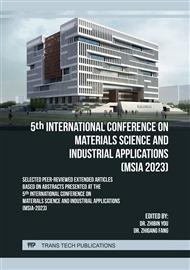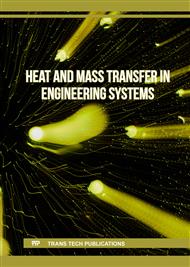[1]
Ji, X.; Nazar, L. F., Advances in Li–S batteries. J. Mater. Chem. 20 (2010), 9821-9826.
Google Scholar
[2]
Bruce, P.G.; Freunberger, S.A.; Hardwick, L.J; Tarascon, J.M., Li–O2 and Li–S batteries with high energy storage. Nat. Mater. 11 (2012), 19-29.
DOI: 10.1038/nmat3191
Google Scholar
[3]
Pope, M. A.; Aksay, I. A., Structural design of cathodes for Li-S batteries. Adv. Energy Mater. 5 (2015), 1500124.
DOI: 10.1002/aenm.201500124
Google Scholar
[4]
Liu, Y.; Wang, Y.; Ma, J.; Li, S.; Pan, H.; Nan, C. W.; Lin, Y. H., Controllable electrical, magnetoelectric and optical properties of BiFeO3 via domain engineering. Prog. Mater. Sci. (2022), 100943.
DOI: 10.1016/j.pmatsci.2022.100943
Google Scholar
[5]
Tokunaga, M.; Akaki, M.; Ito, T.; Miyahara, S.; Miyake, A.; Kuwahara, H.; Furukawa, N., Magnetic control of transverse electric polarization in BiFeO3. Nat. Commun. 6 (2015), 1-5.
DOI: 10.1038/ncomms6878
Google Scholar
[6]
Sun, B.; Mao, S.; Zhu, S.; Zhou, G.; Xia, Y.; Zhao, Y., Improved rate and cycling performances of electrodes based on BiFeO3 nanoflakes by compositing with organic pectin for advanced rechargeable Na-ion batteries. ACS Appl. Nano Mater. 1 (2018), 1291-1299.
DOI: 10.1021/acsanm.8b00011
Google Scholar
[7]
Durai, L.; Moorthy, B.; Thomas, C. I.; Kim, D. K.; Bharathi, K. K., Electrochemical properties of BiFeO3 nanoparticles: anode material for sodium-ion battery application. Mater. Sci. Semicond. Process. 68 (2017),165-171.
DOI: 10.1016/j.mssp.2017.06.003
Google Scholar
[8]
Hu, B.; Wang, J. F.; Zhang, J.; Gu, Z. B.; Zhang, S. T., Synthesis, structures and properties of single phase BiFeO3 and Bi2Fe4O9 powders by hydrothermal method. J. Mater. Sci. Mater. Electron. 26 (2015), 6887-6891.
DOI: 10.1007/s10854-015-3305-8
Google Scholar
[9]
Kim, J.K.; Kim, S.S.; Kim. W.J., Sol–gel synthesis and properties of multiferroic BiFeO3. Mater. Lett. 59 (2005), 4006-4009.
DOI: 10.1016/j.matlet.2005.07.050
Google Scholar
[10]
Zhang, T.; Shen, Y.; Qiu, Y.; Liu, Y.; Xiong, R.; Shi, J.; Wei, J., Facial synthesis and photoreaction mechanism of BiFeO3/Bi2Fe4O9 heterojunction nanofibers. ACS Sustain. Chem. Eng. 5 (2017), 4630-4636.
DOI: 10.1021/acssuschemeng.6b03138.s001
Google Scholar
[11]
Chang, Z.; Qiao, Y.; Wang, J.; Deng, H.; He, P.; Zhou, H., Fabricating better metal-organic frameworks separators for Li-S batteries: Pore sizes effects inspired channel modification strategy. Energy Stor. Mater. 25 (2020). 164-171.
DOI: 10.1016/j.ensm.2019.10.018
Google Scholar
[12]
Hu, C.; Chen, H.; Xie, Y.; Fang, L.; Fang, J.; Xu, J.; Zhang, J., Alleviating polarization by designing ultrasmall Li 2 S nanocrystals encapsulated in N-rich carbon as a cathode material for high-capacity, long-life Li–S batteriesJ. Mater. Chem. A. 4 (2016) 18284-18288.
DOI: 10.1039/c6ta08572e
Google Scholar
[13]
Demir-Cakan, R.; Morcrette, M.; Guéguen, A.; Dedryvère, R.; Tarascon, J. M., Li-S batteries: simple approaches for superior performance. Energy Environ. Sci. 6 (2013), 176-182.
DOI: 10.1039/c2ee23411d
Google Scholar



